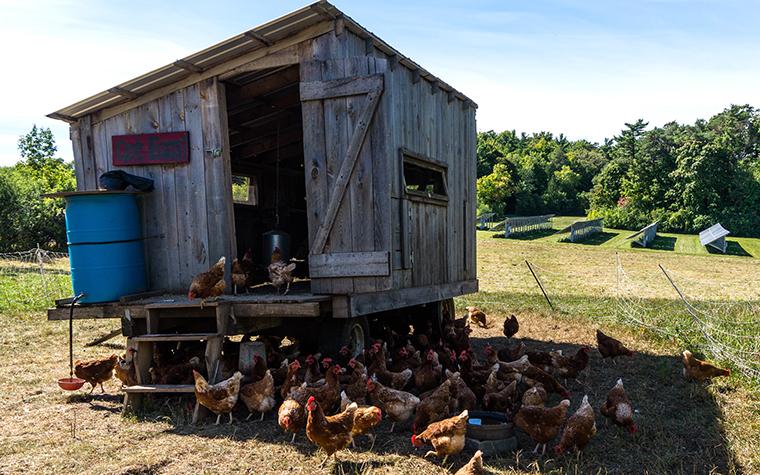COLUMBIA, Mo. – Raising chickens on pasture in movable shelters, often called “chicken tractors,” is gaining popularity among Missouri farmers and families. These mobile systems give birds access to forages and insects while protecting them from predators, and they provide consumers with eggs and meat raised in a way many prefer.
While operating a mobile poultry enterprise is simple, achieving profitability is more complex, said Jennifer Lutes, University of Missouri Extension field specialist in agricultural business. “These systems can work well, but to be profitable you must plan carefully and know your costs,” Lutes said.
To help farmers make informed decisions, MU Extension has released two new resources that are available for free download:
- Mobile Laying Hen Planning Budget (G741), focused on egg production.
- Mobile Poultry for Meat Planning Budget (G742), focused on broiler production.
The guides walk producers through what goes into mobile poultry enterprises, Lutes said. For egg production, that includes the price of chicks, feed, fencing and housing, along with the daily labor of feeding, watering and gathering eggs, plus the cost of cleaning, grading, storing and marketing eggs. For meat birds, it explains how chicks spend about four weeks in brooders before moving to pasture pens, where they grow to market weight by eight weeks and are processed by either a custom processor or on-farm and are marketed directly to consumers.
“People see mobile hen houses on social media and think it must be a low-cost way to raise eggs,” said Tatijana Fisher, state extension specialist with Lincoln University. “But the reality is that costs add up quickly. Feed, equipment and especially labor are major expenses, and they can make the difference between a hobby and a profitable business.”
The publications include sample budgets for different flock sizes, how to calculate breakeven prices and spreadsheet tools that let farmers adjust numbers to match their farm. With the spreadsheets, which are available for Excel or Google Sheets, producers can also test different scenarios, such as changes in feed or egg prices, to see how those decisions affect the bottom line.
“Every farm is different,” said Drew Kientzy, MU Extension senior research analyst in agricultural business and policy. “What works for one family may not work for another. These budget tools give producers the power to run the numbers and make decisions with confidence.”
Both guides also highlight marketing options, regulatory considerations for selling eggs and poultry in Missouri and ways to reduce costs while maintaining healthy birds.
